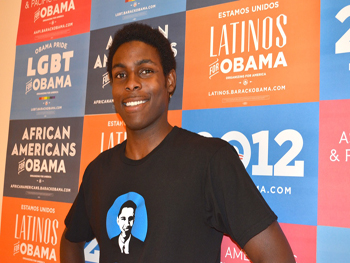 I am only 17 and I’m attending the 2012 Democratic National Convention as the youngest member of the California delegation team. I would have never thought about signing up to go to the DNC without the push from my education mentor Ms. Daphne Bradford. Four years ago, when I was selected to enroll in Ms. B’s 9th grade digital media certification class I couldn’t have imagined that upon graduating high school in June 2012 I would be invited by Organizing for America, the president’s grassroots organizing machine, to go to Charlotte, North Carolina to represent California.
I am only 17 and I’m attending the 2012 Democratic National Convention as the youngest member of the California delegation team. I would have never thought about signing up to go to the DNC without the push from my education mentor Ms. Daphne Bradford. Four years ago, when I was selected to enroll in Ms. B’s 9th grade digital media certification class I couldn’t have imagined that upon graduating high school in June 2012 I would be invited by Organizing for America, the president’s grassroots organizing machine, to go to Charlotte, North Carolina to represent California.
I’ll be 18 years old the day before the November 6th presidential election. My very first vote will be for President Barack Obama, the first African American president of the United States. Most of my peers and students across the nation don’t know they can apply to be a district level delegate, at-large delegate or a member of one of the president’s DNC committees. Ms. B knew I was planning on voting this year so she informed me that I qualified to become a delegate. Running for district level delegate was a fun experience although I didn’t win one of the four male spots for congressional district 37. When I got the call from Ms. Bradford informing me that Mary Jane Stevenson, OFA-California state director had selected me to serve on President Obama’s Credentials Committee as part of the CA delegation team I was pleasantly surprised.
In my government class I learned about delegates going to conventions during general elections but I had no idea that someone as young as myself could be a member of a delegate team. The Credentials Committee handles questions and any problems involving the seating of delegates and alternates at the convention. I will attend committee briefings a few hours after I touch ground in Charlotte, NC. From Sunday, September 2 through Thursday, September 6, when President Barack Obama accepts the Democratic nomination, I will have a say in the DNC decision-making process. I’m excited that my voice will be heard.
Going to the Democratic National Convention will be a learning experience for me because it will be out of my comfort zone. Most young people like myself find politics boring and not as important as it is. This will be the first time that I am a part of a political event of this size, and I think young people such as myself should get more involved in politics because government decisions affect our lives.
As soon as someone turns 18 I believe they should register to vote so they can vote for the person they want in the White House and their communities. Being the fact that I will have the chance to vote this year — because my birthday is the day before the presidential election — I am going to vote for the presidential candidate that is going to try and assist citizens with their financial needs and education. This in turn will benefit me in the long run because I need as much financial assistance as I can get for my college education. I will be a freshman at Cal Poly Pomona this fall.
Since I was involved in politics in the 9th grade, I know which candidate is going to help me with my financial assistance. I’ve been supporting President Barack Obama all this time. The Democratic National Convention allows me to further support the presidential candidate who will assist middle class families like mine. I hope to see other people as young as myself at the 2012 Democratic National Convention in Charlotte, NC.









.jpg)
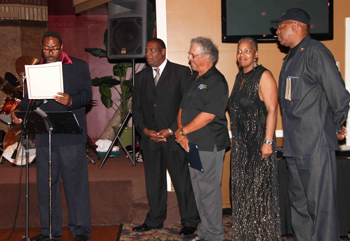 Drummer Al Williams, one of the Living Legends Linda Morgan (second from right) celebrated in April
Drummer Al Williams, one of the Living Legends Linda Morgan (second from right) celebrated in April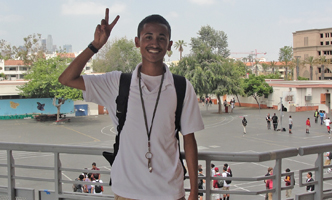 The summer of 2012 has come to an end and the 2012-2013 school year has begun! A school year that symbolizes a new beginning for some and what is the last year of high school for others. But at the end of day, this is a time in which students should be optimistic about the future. Whether some of us are beginning our high school journey or applying to colleges in order to end our journey, hard work and optimism will help us achieve greatness.
The summer of 2012 has come to an end and the 2012-2013 school year has begun! A school year that symbolizes a new beginning for some and what is the last year of high school for others. But at the end of day, this is a time in which students should be optimistic about the future. Whether some of us are beginning our high school journey or applying to colleges in order to end our journey, hard work and optimism will help us achieve greatness. This collaborative multimedia storytelling investigation reveals 15 democratic spaces and places in South LA through the eyes of local community organizers and advocates. These sites encourage positive social change, promote advocacy efforts, and serve as building blocks for community-based social movements. As part of the launch opening reception on September 27th, the community organizers and advocates will share how their work contributes to making South LA a more democratic place in which residents live and work.
This collaborative multimedia storytelling investigation reveals 15 democratic spaces and places in South LA through the eyes of local community organizers and advocates. These sites encourage positive social change, promote advocacy efforts, and serve as building blocks for community-based social movements. As part of the launch opening reception on September 27th, the community organizers and advocates will share how their work contributes to making South LA a more democratic place in which residents live and work. 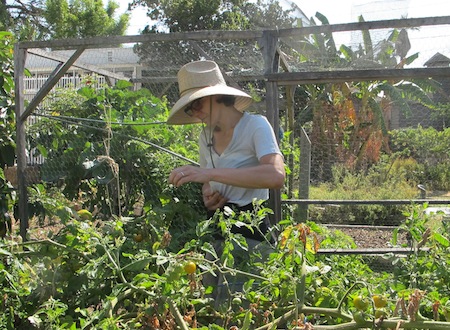 The green thumbs at the Raymond Avenue Community Garden are celebrating a big victory. As of Tuesday, July 31, 2012, the Los Angeles Neighborhood Land Trust is the new owner of the land where nearby residents grow their fruits and vegetables.
The green thumbs at the Raymond Avenue Community Garden are celebrating a big victory. As of Tuesday, July 31, 2012, the Los Angeles Neighborhood Land Trust is the new owner of the land where nearby residents grow their fruits and vegetables.  Nicole Hernandez received her BA, and MVA (11’) degree in Anthropology from the University of Southern California. Interested in mundane life and its cultural dynamics, she hopes her first film, Destined Reign of Troy interests’ viewers in the ordinary. Nicole is now in research-mode on her next project while working as a media coordinator. If you would like to reach her, send an email to
Nicole Hernandez received her BA, and MVA (11’) degree in Anthropology from the University of Southern California. Interested in mundane life and its cultural dynamics, she hopes her first film, Destined Reign of Troy interests’ viewers in the ordinary. Nicole is now in research-mode on her next project while working as a media coordinator. If you would like to reach her, send an email to .jpg) By Jasmyne A. Cannick, Community Contributor
By Jasmyne A. Cannick, Community Contributor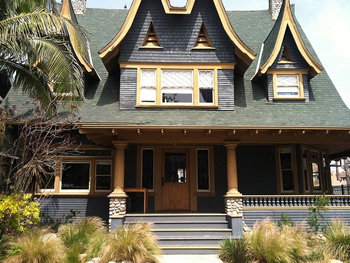 It is a landmark and a piece of history, but these days, it’s something else entirely: a recreation center.
It is a landmark and a piece of history, but these days, it’s something else entirely: a recreation center. Joseph Depuy built the home in 1902 and it stayed in his family until the 1970s. The city bought it for a street-widening project that would never happen. When plans took shape to demolish the house in the mid-90s, the community stepped in. Laura Meyers formed the South Seas House Action Committee with many other members of the community. She says saving the house became something more during a turbulent time in Los Angeles history.
Joseph Depuy built the home in 1902 and it stayed in his family until the 1970s. The city bought it for a street-widening project that would never happen. When plans took shape to demolish the house in the mid-90s, the community stepped in. Laura Meyers formed the South Seas House Action Committee with many other members of the community. She says saving the house became something more during a turbulent time in Los Angeles history.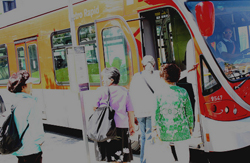
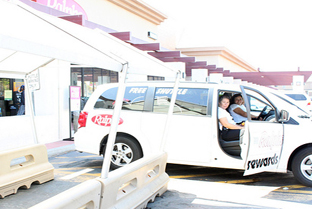 For those living in South LA and wondering how to get their groceries home without violating the rule, one grocery store in the area offers a shuttle for shoppers: The Ralph’s at Vermont and Adams has shuttle-vans that will take customers home within a five-mile radius of the store if they have purchased at least $25 worth of groceries. Customers can sit under a canopy while waiting for a van. The store operates the service from 9:30 a.m. – 10 p.m. daily and is the only Ralph’s in the area to offer shuttle service.
For those living in South LA and wondering how to get their groceries home without violating the rule, one grocery store in the area offers a shuttle for shoppers: The Ralph’s at Vermont and Adams has shuttle-vans that will take customers home within a five-mile radius of the store if they have purchased at least $25 worth of groceries. Customers can sit under a canopy while waiting for a van. The store operates the service from 9:30 a.m. – 10 p.m. daily and is the only Ralph’s in the area to offer shuttle service.




